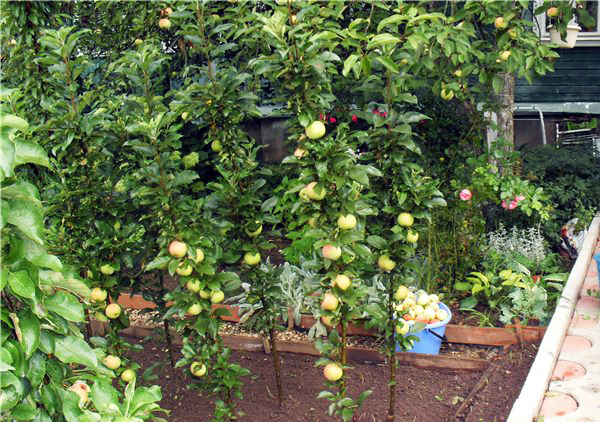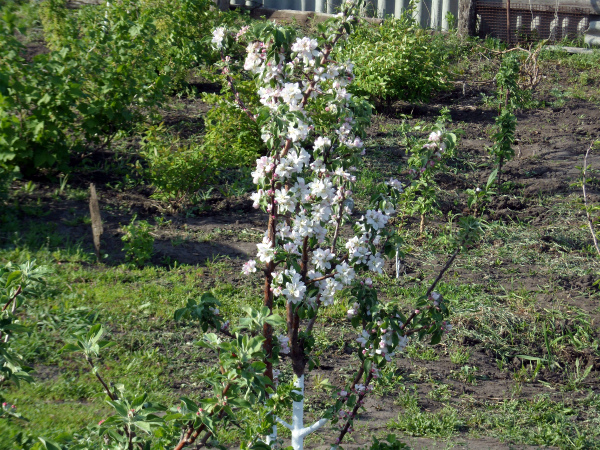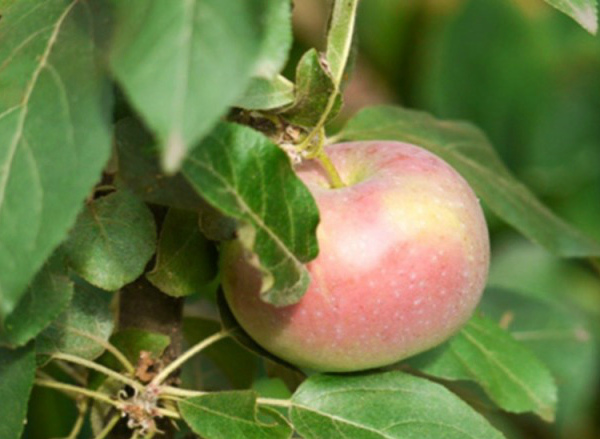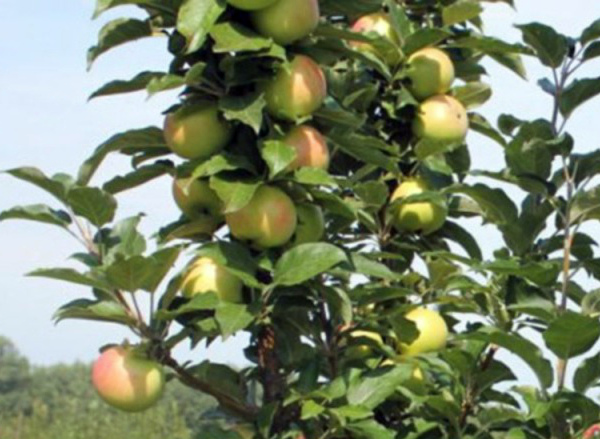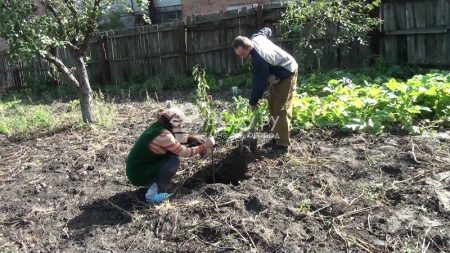Columnar apple variety Currency: growing and care
Content
Character traits
Variety "Currency" was first bred in 1986 by the efforts of VSTISP breeders in Moscow from varieties "KB6" and "OR38T17". Due to this, the new columnar variety received the Vf gene, which reliably protects the tree from scab, allowing it not to be treated with chemicals.
It should also be noted that trees of this variety grow dwarf, with a compact crown, on the branches of which medium-sized apples of a deep yellow color with a red blush on the sides ripen already in October. The variety perfectly manifests itself when grown in central Russia due to its resistance to low temperatures and weather extremes.
The early maturity, which is characteristic of this variety, allows you to get a harvest already in the first year of cultivation, and in full force the variety of this apple tree bears fruit for 4 years of growth. However, high yields persist only for 15-17 years, then the dynamics decline. True, given the compactness of the trees, it is quite easy to uproot them and replace them with new ones.
The winter hardiness of the variety is on a par with the Antonovka and Melba apple trees. In addition, Currency has good resistance to many fungal and infectious diseases.
Growing features
Like most columnar varieties, Currency grows best and bears fruit in moist, fertile soils with good drainage. If at the same time the groundwater does not lie close to the roots of the trees, then the apple tree feels just fine.
It is recommended to cover the trunk and lower branches for the winter to protect the tree from small rodents.
Saplings are best planted in partial shade in early spring or late autumn. Considering that ripening occurs in early October, it is better to plant or transplant in mid-late October. With a developed root system, young trees quickly take root in a new place.
The planting pattern is nothing special: the depth of the pit depends on the development of the roots of the seedling, as well as the width: between the seedlings there should be at least 50 centimeters, and between the rows - about 1 meter. Often, cereals are sown in the aisle to protect the roots from damage. This method of planting is called compacted. However, the columnar apple tree grows well in sparse plantings. In this case, the trees are placed in pits with a depth and width of at least 90 centimeters, keeping the distance between them not less than 1 meter. This type of planting will allow the root system to develop more freely, which will have a positive effect on yield.
The main thing is that the first years of the seedling's life it has protection from the wind. Therefore, very often young trees are planted along the fence or outbuildings.
Characteristics of the variety
The columnar apple tree "Currency" bears fruit of medium size, weighing up to 200 grams. The rind is yellow with a distinct blush on the sides. The peel itself is thin, but at the same time retaining its elasticity for a long time. Apples stay on the branches for a long time, even reaching maturity, which distinguishes the variety from other varieties, which are often prone to falling off ripe fruits.
The variety also exhibits excellent taste - the pulp is juicy, sweet with a slight sourness.The color of the flesh is white, has a light persistent aroma. Apples are suitable both for fresh consumption and for preservation, baking and drying. However, this apple variety is also distinguished by a long shelf life, up to 3-4 months.
In height, the columnar apple tree reaches about 2.5 meters, while in diameter it rarely exceeds 25-30 centimeters. From the point of view of decorativeness, this variety fits well into any garden composition. This is not least due to its resistance to various diseases, because its leaves retain a presentable appearance throughout the season, they do not have spots, rot, dots, traces of insect damage. Until the middle of October, the foliage retains freshness and greenery, which favorably distinguishes "Valyuta" from other varieties.
Care
The columnar apple tree does not require specific care due to its resistance to diseases and most pests, but the garden should not be started at all. The first two years of life, seedlings need regular watering - at least twice a week. The pruning and shaping of the appearance of apple trees begin in the second year of the tree's life. It is necessary to completely remove the side shoots so that fruits develop in their place next year.
Trees respond well to organic and mineral fertilizers, especially before the fruiting period. Freely use superphosphate, potash fertilizers, humus or complex fertilizers (carefully read the description and dosage before use).
Young seedlings must be tied up in order to protect them from the effects of strong winds, and also to cover the trunk and lower branches for the winter in order to protect them from rodents and small animals that feed on the bark.
If the planting was done in spring, then it is necessary to cut off all flowers in the first year to help the tree form well. When planting in the fall, you can only cut off half of the flowers.
Video "Columnar Apple Trees"
In this video, the chief agronomist of the Sady Urala nursery talks about columnar apple trees, their features, advantages, and varieties.

